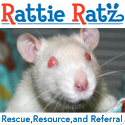by Noah Whitaker
Noah J. Whitaker is the coordinator of the Tulare & Kings Counties Suicide Prevention Task Force, and the Community Outreach Manager for the Tulare County Health & Human Services Agency. He writes a monthly column for KRL on mental health and suicide prevention. You can read Part 1 here.
Our last article explored bringing folks to the table to address suicide, or who. We’ll now assume you’ve at least rounded up a few interested folks. If you don’t have a large and diverse group, don’t worry, you can work on that over time. This is a process of continually developing new partnerships, inviting new people and organizations to the table, and constantly improving and strengthening your efforts.
The formation of a new group brings with it countless benefits as well as challenges. Collective action can be a powerful force. Getting to collective action, however, can be a bit of an undertaking. Forming a group goes beyond simply getting people to the table; it involves keeping them there.
Strategic planning is a process in which the members of your group formalize and work through the important elements of figuring out both How your group will function and What your group will do. Answering those questions allows for cohesive action, and for the accomplishment of far greater advancement than individuals can accomplish. For these steps we’ll look at the strategic planning process. This article isn’t intended to be a detailed description of that process, but rather a glimpse at some of the basic components, and to provide examples from our efforts.
“The productivity of a work group seems to depend on how the group members see their own goals in relation to the goals of the organization.” Ken Blanchard
One of the things I have witnessed is that in the aftermath of a suicide death, or a cluster of deaths, is that people become motivated to action. However, taking action for the sake of action can be more dangerous than not taking action at all, especially in the realm of suicide prevention. Embracing a strategic planning process is invaluable as it helps guide, inform, and unite your group and efforts. The information generated from following this process can help your group to identify best practices as well as actions to avoid.
After your group has established Who, the group needs to decide How its members participate. Developing parameters around membership is not intended to exclude participation, but rather to clarify the membership and provide a vehicle for decision-making. Perhaps your group is an “open” group in which anyone can come, participate, and be part of the decision-making process. Or, maybe you would like to embrace a voting membership. Maybe you have representatives who attend from other groups to liaison and coordinate efforts across diverse memberships. There are numerous ways and types of governing structures. It is your group’s task to figure out which will work best for you.
In our local efforts, we established a coordinator who functions as a Director or Chief Executive Officer, two Co-Chairs who lead meetings and help drive efforts, an Executive Committee, a 25-member voting membership, and a limitless non-voting membership. The Executive Committee is comprised of the current Co-Chairs, two Vice-Chairs, two Coordinators, our Treasurer, and our Secretary. This group plans the agenda of our meetings, makes decisions between voting meetings, helps to steer and set direction, and addresses issues facing our efforts. We also adopted a light version of Robert’s Rules of Order, which helps guide the decision-making process.
Our voting membership was originally comprised of 15 voting member positions that represented various sectors of the community, such as law enforcement, faith-based organizations, mental/behavior health, and others. When our efforts grew to include a neighboring community, we increased our voting positions to 25. The odd number has assisted us in sidestepping voting ties. Designating specific sectors also helped us to identify sectors that were not presently at the table, but that we wanted to seek input and participation from. We reserved four positions as at-large, so we could welcome valuable people to the table who we might have otherwise overlooked. This structure provided a clear pathway to make decisions, as each position has one vote, and voting is our vehicle for action. Our structure allows for non-voting members who have equal participation in discussions, activities, and all facets of our efforts; they simply don’t cast a ballot.
One of the additional elements in discussing How is to decide if there are any prerequisites or requirements for becoming and remaining a voting member. Perhaps there is an annual membership fee, attendance requirements, or a mandate to volunteer for activities. This should be mindfully approached as you don’t want to establish significant barriers that either prevent or discourage participation. You might even want to have formally adopted exceptions to these requirements so your group membership can be flexible and inclusive.
What can be a bit of a challenge as this involves more concretely examining the broad functions that your group will engage in. This is a time for developing mission, vision, and values statements, as well as a framework for obtaining knowledge and deciding which actions your group should embark upon. Of course, if you’re not already familiar with concepts in suicide prevention, it might seem challenging to make decisions when you’re not yet certain as to what your group should do.
“Our goals can only be reached through a vehicle of a plan, in which we must fervently believe, and upon which we must vigorously act. There is no other route to success.” Pablo Picasso
Fortunately, there are resources that can help guide you. Finding a starting point can induce anxiety and confusion, but the three guides recommend below are invaluable in helping your group decide What your group will do. These guides were created by some of the most experienced and best minds in the field of suicidology, and will give you a solid foundation for action.
National Strategy for Suicide Prevention
Preventing Suicide: A Technical Package of Policy, Programs, and Practices
Transforming Communities: Key Elements for the Implementation of Comprehensive Community-Based Suicide Prevention
Using these guides, your group will have to work through what your goals and objectives will be. In management literature things like SMART Goals are often mentioned, but I think that if you review the National Strategy, a lot of that heavy lifting has already been accomplished. If it is helpful to you, you could view the National Strategy as more of a café menu from which to select, but know that the goals and objectives provided there are supportive of one another. Your group will have to identify and select which objectives you have the capacity to utilize. I do suggest starting with objectives that aren’t too lofty or your membership might get stymied. Target things you can embrace and accomplish, then move onto stretch goals and work toward those over the long-term.
Our group felt it would be most helpful to focus on four global areas, each of which then breaks their broad goals into smaller, more manageable objectives that are in alignment with the National Strategy referenced above. This structure helps our voting and nonvoting members have a greater level of clarity in making plans for action, as well as external individuals and organizations in gaining a better understanding of where our group is heading. Our four major goals are:
Strengthen and enrich current programs and intervention services
Promote effective clinical and professional practices
Develop and implement suicide prevention programs
Improve and expand data collection systems
These goals form the basis of our committees, which then take these goals and develop objectives and steps to take toward realizing their goals. A major benefit of this structure is that the committee can more comprehensively study an issue and make recommendations to our larger membership as to what course of action they find to be most beneficial. Doing so better informs all of our efforts and helps us establish better pathways for action.
The structure and goals of your group may look vastly different from ours, but should still come into alignment with the National Strategy. The largest benefit of doing so is that it helps the efforts of your local group to seamlessly integrate into regional, state, and national efforts. Local work should support, strengthen, and expand upon national efforts, but be tailored to the unique strengths, weaknesses, needs, and will of your community.
“What you get by achieving your goals is not as important as what you become by achieving your goals.” Zig Ziglar
If you or someone you know is at risk for suicide, please contact the National Suicide Prevention Lifeline at 1 (800) 273-8255.
If you would like to learn more about the SPTF, refer to the contact information below.
For Non-Crises Information Related to the SPTF:
Suicide Prevention Task Force
C/O Noah Whitaker
5957 S. Mooney Blvd.
Visalia, CA 93277
(559) 624-7471
Coordinator’s Email: sptf@tularehhsa[dot]org
Facebook: www.facebook.com/HOPE.SPTF
Website: www.sptf.org
Check out KRL’s Mental Health section for more mental health related articles.















0 Comments